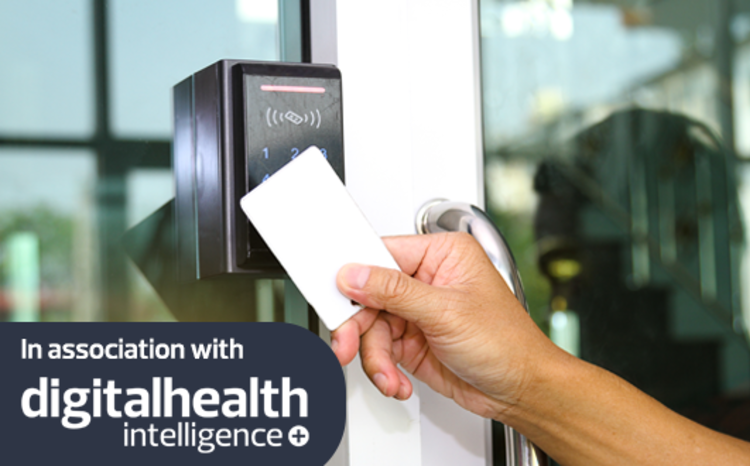EHI Awards 2011: That’s a RAPA
- 8 May 2012

Did you know that community matrons – whose job is to support people with long term conditions at home – often have no way of knowing if their patients are admitted to hospital in an emergency?
Not only that, but that should they find out by chance, they usually have no way of getting information about what has happened to the patient, as they cannot prove to ward staff who they are?
And that hospital nurses can spend hours searching for the name or number of the community matron who might help ease to the patient’s discharge home?
It is, by any stretch of the imagination, a shocking state of affairs. Luckily, it is one that no longer applies in Plymouth, where the local NHS ICT Shared Service (PICTS) has come up with an elegant solution.
Simple, but effective
Their award-wining system, known as RAPA (Risk of Admission Patient Alert), passes information between service providers and staff via SMS and email.
It is built within the SALUS application framework and packaged with Plymouth Hospitals eWard (which provides a real time ward view), fed by the InterSystems Ensemble rapid integration platform.
It works like this. Community nurses enter their own details and those of patients into the system. “They need enter details only once,” says Susan Bracey, head of software development in integration at PICTS. “It is important that the system is not too onerous.”
If one of the nurses’ patients has an unplanned admission to the hospital, they and their team leader receive an email and SMS to alert them.
They also receive alerts when patients attend the emergency department, when patients are transferred between wards, and when patients are discharged.
Back at the ward and in the emergency department, the eWard system displays a RAPA icon indicating to staff that the patient has a community case manager.
They can click through to the details and make contact. Each community nurse has a code that allows them to identify themselves to ward staff.
There is no new information to collect, no new application to log into, and no new device to hold. As Bracey says: “It is fairly simple, but sometimes the simple ideas are the most effective.”
RAPA also generates reports for GPs and emergency planners and provides a picture of repeated unplanned admissions.
User stories
Users are very enthusiastic about it. “RAPA is really changing the culture,” a community matron from Cornwall told the development team.
“Before, nurses on the ward would not give us any information because they could not verify who we were. Now, they are more willing to talk to us – and they are even contacting us to talk about our patients. I think this is really great and finally we are able to work together.”
Similarly from the acute side, as expressed by this ward care team leader. “RAPA saves me time.
“Before, although the patient would say they had a nurse, we would not know who it was and it would take hours trying to find out so we could talk about discharge. This information is at my finger tips now and it is great and saves me a lot of time searching.”
RAPA is designed to help prevent unnecessary or inappropriate admissions and reduce length of stay where appropriate. Certainly there is plenty of anecdotal evidence to suggest that it works, as this story from a local community matron demonstrates in quite a surprising way.
She explains how she was off duty and received a RAPA text informing her of a patient admission. This man was a danger to the public, staff and visitors – on his last admission he threatened to kill a member of staff before self discharging five days later.
Previous admissions had found no medical reason to keep him in a bed, and he had a care plan to prevent admissions in the future.
“I thought it a little strange that he had been admitted to a ward,” she says. “So I decided to ring and inform staff that he has a potential for carrying weapons and tell them about the care plan.”
Hospital staff searched him and found he was carrying a hammer, rope, stones and a bottle of cider. They discharged him immediately.
It is an unusual case, but the community nurse adds: “The RAPA has proved to be valuable to my service and I am able on a regular basis to discharge patients sooner, prevent an extended length of stay and more often prevent admission altogether.”
Available in an ITK wrap
Andy Blofield, director of PICTS, puts the success of the system down to teamwork and clinical input. “It’s been a real team effort,” he says.
“It has involved all aspects of the shared service to get it up and implemented, and we have had great partnership with the interoperability toolkit team at NHS Connecting for Health and with InterSystems.
“We have also had real enthusiasm from the clinicians and admissions staff. They are the ones that have driven this process through.”
However, there is currently no hard data to back up the anecdotes. “This is where we fall down at the moment. Proving it is quite difficult,” explains an apologetic Bracey.
“RAPA cannot collect any data about whether its use influences discharge.” The local performance reporting team are currently working on this deficiency.
That has not stopped NHS South West looking to roll RAPA out more widely. They can do so because PICTS has gone to the trouble and expense of developing an ITK wrapper using Ensemble.
Blofield explains: “This will allow the system to be distributed with true plug-and-play interoperability for those trusts that have an ITK compliant interface engine, or that will convert standard HL7 to ITK for those that don’t. Thanks to Plymouth’s work, this system could very easily replicated throughout the NHS.”
SALUS is source system agnostic, which means that other organisations could use completely different feeder systems, without the need for bespoke interfaces or a new integration platform.
Recognition
Winning their category of the EHI Awards 2011 in association with BT left the team “stunned”, says Blofield, not least because they were so impressed by the calibre of other entrants.
He says that it was great to see the team recognised – and for RAPA to get some attention. “We have spent a lot of time and effort to make this generic and we think it could have huge benefits for other organisations.”

To enter an award category, reserve a table, or for more information on the EHI Awards 2012 in association with BT please visit the Awards section of the website.




